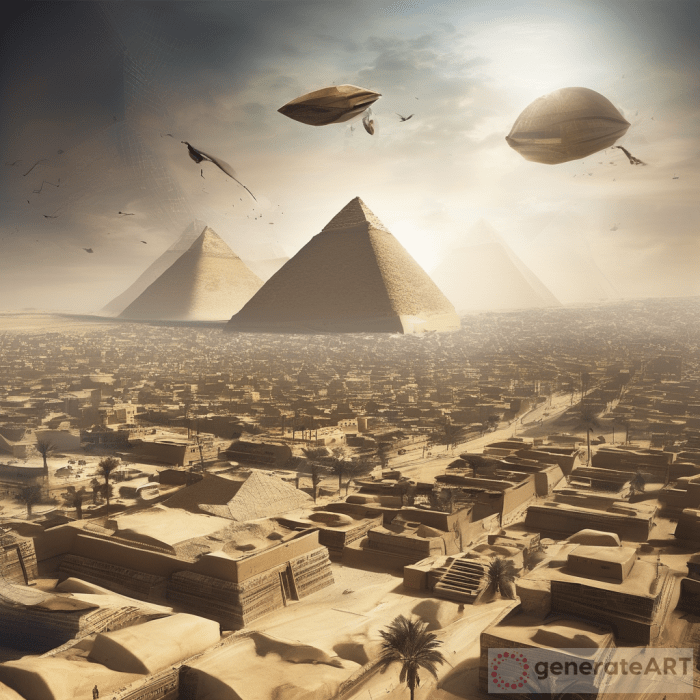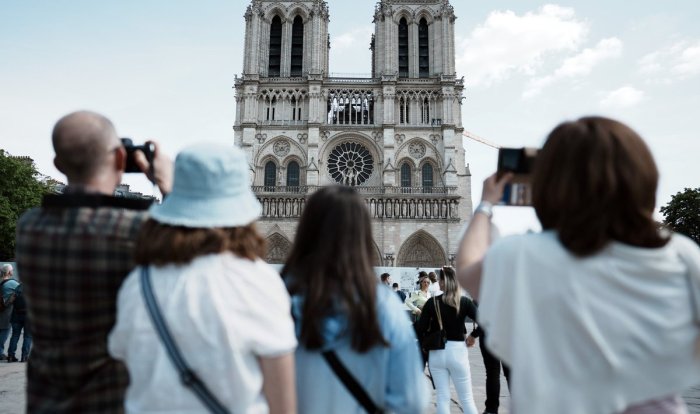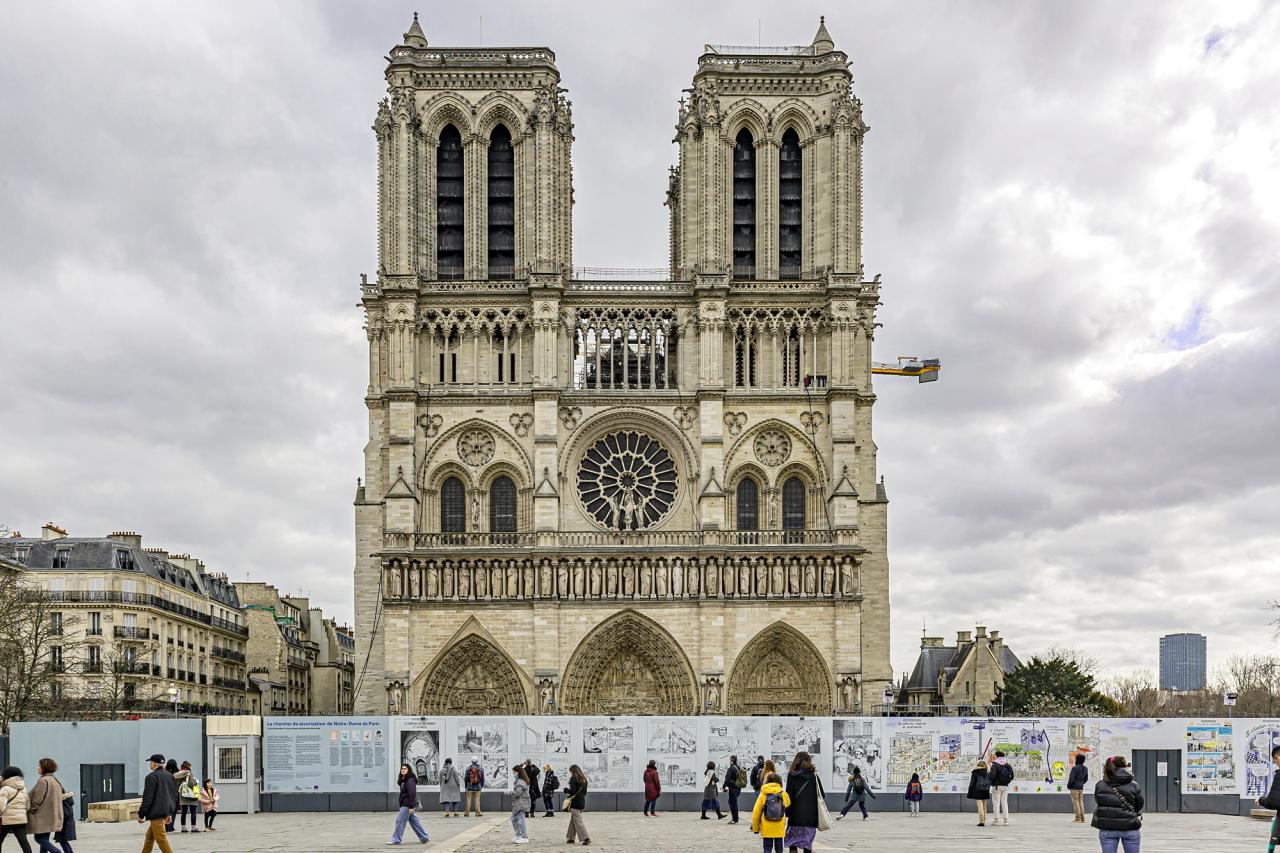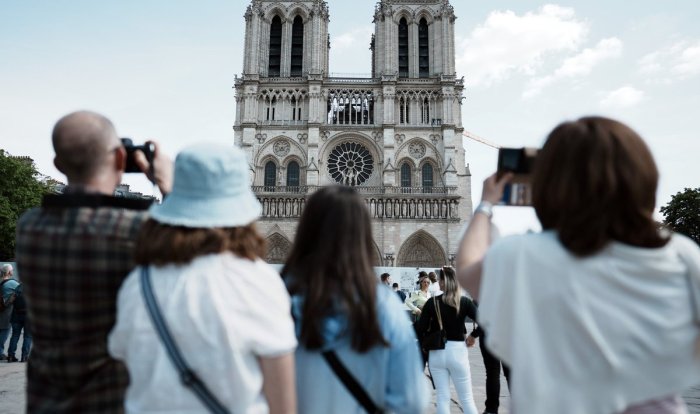Pyramids of Giza revamp: a project poised to breathe new life into one of history’s most iconic wonders. This initiative delves into the intricate details of restoring and revitalizing these ancient marvels, considering their historical significance, potential revamp proposals, architectural and engineering aspects, visitor experience, environmental impact, and cultural preservation. It explores the multifaceted challenges and opportunities that come with such a monumental undertaking, promising a fascinating journey into the future of these majestic structures.
The project will encompass a comprehensive study of the pyramids’ current condition, examining historical preservation efforts and identifying potential vulnerabilities. Various restoration techniques will be analyzed, from traditional methods to cutting-edge technologies. A detailed analysis of potential revamp proposals, including economic implications, and potential funding sources, will be presented. The project will also address the crucial aspects of visitor experience, environmental impact, and cultural preservation, ensuring that the revamp respects the pyramids’ historical integrity while enhancing the tourism experience.
Historical Context
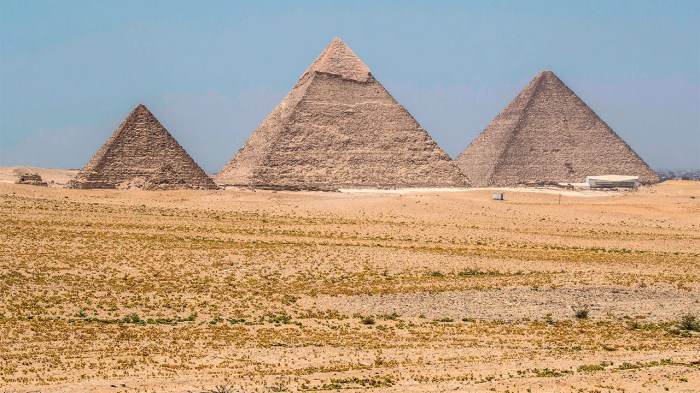
The Pyramids of Giza, majestic testaments to ancient Egyptian ingenuity, stand as enduring symbols of human achievement. These colossal structures, meticulously constructed thousands of years ago, offer invaluable insights into the society, beliefs, and technology of their time. Their remarkable preservation, despite the ravages of time and environmental factors, continues to fascinate and inspire awe.The pyramids’ evolution reflects a gradual development in architectural techniques and philosophical concepts.
Early mastabas evolved into the step pyramids, which eventually led to the smooth-sided pyramids we see today. This progression showcases a continuous quest for perfection and a profound understanding of engineering principles. The pyramids, beyond their physical form, served as monumental tombs, signifying the pharaoh’s journey to the afterlife and reflecting the profound beliefs of the ancient Egyptians.
Preservation and Restoration
The pyramids have endured centuries of weathering, erosion, and human intervention. The current state of preservation varies across the pyramids, with some exhibiting more significant damage than others. Extensive restoration efforts have been undertaken to mitigate the effects of these factors. These interventions aim to stabilize the structures, protect them from further deterioration, and maintain their historical integrity.
Restoration Techniques
Various techniques have been employed in the restoration of the pyramids, reflecting the evolving understanding of materials science and preservation methods. Early restoration efforts often involved simple repairs and consolidations, whereas modern approaches incorporate advanced materials and techniques, aiming for a more sustainable and comprehensive solution. A significant difference lies in the consideration of the historical context and the material properties of the pyramids during each restoration phase.
Modern approaches prioritize minimizing intervention, allowing the original structure to remain intact as much as possible.
Examples of Similar Monuments
Similar historical monuments, such as the ancient temples of Angkor Wat in Cambodia and the Colosseum in Rome, have also undergone restoration projects. These projects demonstrate the global effort to preserve and understand the past, often balancing preservation with the need to adapt to contemporary conditions. Comparing these restoration efforts highlights the common thread of preserving invaluable historical legacies.
These examples demonstrate the enduring challenge of balancing preservation with the need for adaptation.
Table of Historical Context
| Historical Period | Preservation State | Restoration Efforts | Impacts |
|---|---|---|---|
| Old Kingdom (2686-2181 BCE) | Initially pristine, later affected by erosion and weathering. | Limited early interventions. | Foundation damage and erosion, especially in the external layers of the structures. |
| Middle Kingdom (2055-1650 BCE) | Some preservation measures, but no large-scale restoration projects. | Focus on minor repairs and consolidations. | Limited impact from external factors, but human interventions are minimal. |
| New Kingdom (1550-1069 BCE) | Continued deterioration from environmental factors and lack of maintenance. | Few documented restoration efforts during this period. | Increased erosion and structural weakness due to the passage of time. |
| Modern Era (19th-21st Century) | Ongoing deterioration, but with significant restoration efforts. | Advanced techniques and materials, focusing on stability and minimal intervention. | Successful stabilization and conservation, but the delicate balance between preservation and modernization is crucial. |
Potential Revamp Proposals
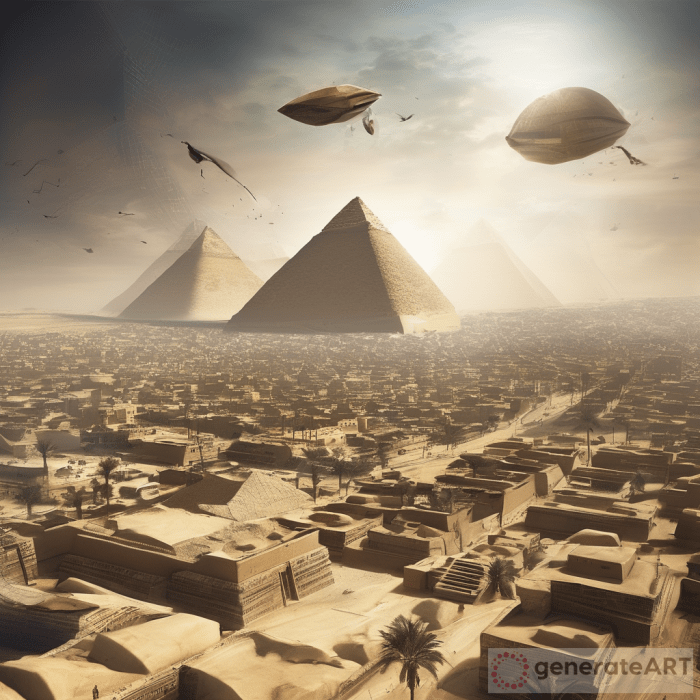
The Pyramids of Giza, a testament to human ingenuity and architectural prowess, continue to captivate visitors worldwide. However, the site faces challenges related to visitor flow, preservation, and sustainable development. A thoughtful revamp, balancing preservation with enhanced visitor experience, is crucial to ensure the site’s continued relevance and appeal for generations to come. This discussion delves into potential revamp proposals, their associated challenges, economic implications, and potential benefits for tourism and the local economy.
Potential Revamp Proposals
Various proposals exist for revitalizing the Pyramids of Giza, each with its own set of advantages and disadvantages. These proposals range from minor improvements to significant infrastructure upgrades. A careful evaluation of each proposal is essential to identify the most suitable approach for preserving the site’s historical significance while enhancing its appeal to tourists.
Proposal Descriptions
- Improved Infrastructure and Visitor Flow Management: This proposal focuses on enhancing the visitor experience through improved pathways, designated areas for rest stops, and better signage. It also includes establishing efficient ticketing systems and visitor management strategies to minimize congestion and ensure smooth flow. This approach aims to improve the overall visitor experience without significant alterations to the site’s historical structure.
- Interactive Exhibits and Educational Centers: This approach involves the development of interactive exhibits that provide insights into the pyramids’ construction, history, and cultural significance. This could include augmented reality experiences, virtual tours, and dedicated educational centers that offer deeper understanding for both children and adults. This strategy aims to deepen visitor engagement and educational value, complementing the site’s historical significance.
- Sustainable Tourism Initiatives: This proposal emphasizes eco-friendly practices and sustainable tourism strategies. This includes the development of renewable energy sources, improved waste management systems, and promoting responsible tourism practices among visitors. This approach prioritizes long-term preservation of the site’s environment and cultural heritage.
- Expansion of Cultural and Recreational Activities: This approach aims to broaden the appeal of the Giza complex by incorporating cultural events, concerts, and recreational areas. This could involve constructing performance spaces, incorporating craft shops, and developing themed restaurants that showcase local cuisine and artistry. This proposal seeks to increase the economic opportunities for the local community while enhancing the overall visitor experience.
Challenges and Limitations, Pyramids of giza revamp
Implementing any revamp plan faces inherent challenges and limitations. These challenges include navigating complex bureaucratic processes, securing necessary funding, addressing local community concerns, and ensuring the proposed changes do not compromise the site’s historical integrity. Thorough consideration and stakeholder engagement are critical for successful implementation.
Economic Implications
The economic implications of each revamp proposal are substantial. Improved visitor flow and infrastructure upgrades can generate revenue through increased ticket sales and tourism spending. Interactive exhibits and educational centers can attract a broader range of tourists and generate additional revenue streams. Sustainable tourism initiatives can reduce operating costs and enhance the long-term viability of the site.
The Pyramids of Giza revamp is looking pretty cool, with plans for improved visitor experiences. While they’re focusing on making the site more accessible and user-friendly, it’s interesting to note how similar businesses like Delta Air Lines are adapting to modern trends. For example, Delta’s partnership with DraftKings, delta air lines draftkings , shows how companies are innovating and finding new revenue streams.
Ultimately, these types of partnerships and upgrades are all part of keeping these historical sites relevant and engaging for future generations.
Cultural and recreational activities can create new employment opportunities and boost local businesses. However, significant upfront costs and potential disruptions to existing operations need careful consideration.
Pros and Cons of Each Proposal
| Proposal | Description | Advantages | Disadvantages |
|---|---|---|---|
| Improved Infrastructure and Visitor Flow Management | Enhance visitor experience with improved pathways, signage, and ticketing. | Increased visitor comfort, reduced congestion, improved efficiency. | Potentially limited impact on overall appeal, may not attract new visitors. |
| Interactive Exhibits and Educational Centers | Develop interactive exhibits and educational centers. | Increased visitor engagement, deeper understanding of history, potential for attracting new demographics. | High initial investment in exhibits, requires specialized personnel, potential for displacing existing cultural activities. |
| Sustainable Tourism Initiatives | Implement eco-friendly practices and responsible tourism strategies. | Enhanced environmental preservation, reduced operating costs, potential for attracting environmentally conscious tourists. | Requires significant upfront investment in renewable energy and waste management systems, potentially higher ticket prices. |
| Expansion of Cultural and Recreational Activities | Incorporate cultural events, concerts, and recreational areas. | Increased tourism spending, new employment opportunities for local communities, broadened appeal. | Potential for conflict with existing cultural practices, increased operational costs, risk of impacting historical integrity. |
Potential Funding Sources
Potential funding sources for the project include government grants, private sector donations, international funding organizations, and public-private partnerships. Leveraging diverse funding sources is crucial for securing the necessary resources.
Benefits for Tourism and the Local Economy
A successful revamp of the Pyramids of Giza can significantly benefit tourism and the local economy. Increased visitor numbers and spending can create new jobs, boost local businesses, and improve the overall quality of life for residents. A well-managed revamp can attract tourists year-round, fostering economic growth and sustainability.
Architectural and Engineering Considerations: Pyramids Of Giza Revamp
The pyramids of Giza, testaments to ancient engineering prowess, face modern challenges. Their structural integrity, susceptible to environmental factors and the weight of time, requires careful consideration for any revamp project. Addressing potential vulnerabilities and employing innovative engineering solutions is crucial for ensuring the pyramids’ preservation for future generations. This section delves into the architectural features, potential vulnerabilities, and proposes engineering solutions to enhance the pyramids’ structural integrity.
Architectural Features and Vulnerabilities
The pyramids’ massive scale and unique construction techniques are inherently complex. Their smooth, angled surfaces, while aesthetically pleasing, can be vulnerable to erosion and weathering. The internal chambers and corridors, while intricate, present challenges in terms of access and potential structural instability. Furthermore, the use of massive stone blocks and the intricate joinery techniques used in their construction can be vulnerable to cracking and shifting under stress.
The Pyramids of Giza revamp is looking pretty cool, right? But while they’re restoring ancient wonders, beekeepers around the world are working tirelessly to keep vital colonies alive. Their innovative techniques, like careful hive management and supplemental feeding, are crucial for ensuring these pollinators thrive. This dedication to bee health echoes the careful restoration efforts of the Pyramids, highlighting the importance of preserving both ancient structures and essential ecosystems.
Learning more about these vital efforts can be found at how beekepers around the world are keeping colonies alive. Hopefully, the careful conservation efforts will ensure these amazing structures remain a marvel for generations to come.
Settlement, caused by uneven ground or external pressure, is another significant concern.
Potential Engineering Solutions
Strengthening the existing structure is paramount. Reinforcing the core of the pyramid with advanced composite materials or strategically placed internal supports can improve overall stability. Employing geotechnical assessments to understand soil conditions and the impact of external factors like groundwater fluctuations is crucial. This will help in implementing countermeasures like drainage systems or stabilizing foundations. The use of advanced seismic analysis to predict and mitigate potential damage during earthquakes is also a critical step.
New Materials and Technologies
Innovative materials and technologies can play a pivotal role in a revamp. Advanced composites, engineered to resist erosion and weathering, could be used to reinforce exterior surfaces. Smart materials, capable of adapting to temperature changes and environmental stresses, could enhance the pyramid’s resilience. The application of advanced geopolymer concrete, which can bond strongly with existing stone, could be explored to fill cracks and create a seamless, protective layer.
Nanotechnology could be employed to create self-healing materials that automatically repair minor damage over time.
Safety Protocols for Workers
A comprehensive safety protocol is essential for all revamp activities. Rigorous training programs for workers, focusing on the specific challenges of working on a historical site, must be implemented. Advanced safety equipment, including fall protection systems, specialized protective gear, and dust-control measures, is mandatory. Strict adherence to established guidelines for the handling and transportation of materials is essential.
Impact on Tourism Infrastructure
The revamp project will inevitably affect the existing tourism infrastructure. Temporary adjustments to access points and visitor routes will be necessary. The project should consider creating a detailed visitor experience that maintains the integrity of the historical site. Potential noise and dust mitigation strategies must be in place to minimize disturbance for both workers and visitors. The project needs to carefully balance preservation efforts with visitor access and comfort.
Materials and Technologies for Revamp
| Material/Technology | Properties | Potential Applications |
|---|---|---|
| Advanced Composites | High strength-to-weight ratio, resistance to weathering | Reinforcing exterior surfaces, creating internal supports |
| Smart Materials | Adaptive to temperature and stress changes | Enhancing the pyramid’s resilience to environmental factors |
| Geopolymer Concrete | Strong bonding with existing stone, high compressive strength | Filling cracks, creating a protective layer |
| Nanotechnology-based Self-Healing Materials | Automatically repair minor damage | Long-term maintenance, reduced need for periodic repairs |
| Advanced Sensors | Monitor structural integrity, detect early signs of distress | Real-time monitoring of the pyramid’s condition |
Tourism and Visitor Experience
The Pyramids of Giza are a global icon, attracting millions of tourists annually. A revamp project presents a unique opportunity to enhance the visitor experience, boost the local tourism economy, and ensure the long-term preservation of this invaluable historical site. Careful planning and implementation are crucial to maximizing the positive impact while minimizing potential negative consequences.A successful revamp will not only improve the experience for current visitors but also create a more sustainable and accessible destination for future generations.
This requires a multi-faceted approach that considers the needs of both tourists and the preservation of the historical site.
Potential Impact on the Tourism Sector
The revamp can significantly boost the tourism sector in the area. Improved infrastructure, enhanced visitor facilities, and a more engaging experience will attract more tourists, increasing revenue for local businesses and creating job opportunities. Successful tourism revitalization projects around the world demonstrate that a well-planned revamp can lead to a substantial increase in tourist numbers and economic activity.
For example, the Louvre’s recent modernization efforts have led to a significant increase in visitor numbers and economic benefits for the surrounding area.
Improving the Visitor Experience at the Pyramids
The revamp offers the chance to dramatically improve the visitor experience at the Pyramids. This includes modernizing existing facilities, providing informative and engaging exhibits, and offering diverse ways to experience the site, such as guided tours and interactive displays. The goal is to transform the experience from a passive viewing of ancient history into an active engagement with the cultural and historical significance of the site.
Examples of successful visitor experience enhancement include the use of augmented reality technology in museums, allowing visitors to interact with historical artifacts and information in a more immersive and engaging way.
Strategies for Managing Visitor Flows and Crowd Control
Effective crowd management strategies are vital during the revamp and beyond. Implementing timed entry systems, utilizing digital reservation systems, and carefully designed pathways can regulate the number of visitors at the site at any given time. The introduction of shuttle buses and efficient transportation systems will also help manage visitor flows and reduce congestion. This can be further enhanced by implementing smart traffic management solutions, as used in major urban areas to control traffic flow and congestion.
Preserving Historical Integrity While Improving Visitor Experience
Maintaining the historical integrity of the Pyramids is paramount. The revamp must incorporate environmentally conscious designs that minimize the impact on the surrounding environment and the historical structures themselves. Innovative solutions that use renewable energy and sustainable materials should be prioritized. The use of eco-friendly transport solutions can also help to minimize the environmental footprint of tourism.
This careful balance between progress and preservation is essential for the long-term success of the project.
The Pyramids of Giza revamp is looking pretty cool, but I’m wondering how much of the project will impact tourism. With the recent expansion of Frontier flights, particularly the new routes from Florida, Fort Lauderdale, to Boston and Texas, frontier flights florida fort lauderdale boston texas routes could potentially see a spike in passengers visiting the area.
Hopefully, the revamp will maintain the wonder of the pyramids and encourage even more visitors.
Ensuring the Sustainability of the Tourism Sector
The sustainability of the tourism sector after the revamp depends on responsible planning and implementation. This includes diversifying the offerings at the site to cater to a wider range of visitors, establishing partnerships with local communities, and promoting responsible tourism practices. Examples of sustainable tourism practices include educating tourists about local customs and traditions, promoting ethical souvenirs, and ensuring that local businesses benefit from tourism activities.
Visitor Experience Enhancement Strategies
| Strategy | Expected Outcome |
|---|---|
| Implementing a timed entry system | Reduced crowding, improved visitor flow, and enhanced experience |
| Introducing interactive exhibits and augmented reality experiences | Increased visitor engagement and understanding of the site’s history |
| Developing diverse guided tours and educational programs | Increased visitor satisfaction, enhanced understanding of the cultural significance |
| Utilizing sustainable and eco-friendly materials and practices | Minimized environmental impact and demonstrated commitment to long-term preservation |
| Establishing partnerships with local communities and businesses | Economic benefits for local communities and improved visitor experience through local insights |
Environmental Impact Assessment
The Pyramids of Giza, a testament to human ingenuity, are also deeply intertwined with their surrounding environment. Any revamp project must meticulously consider the potential ecological ramifications, from dust and noise pollution to alterations in local flora and fauna. A comprehensive Environmental Impact Assessment (EIA) is crucial to navigating these complexities and ensuring a sustainable future for this historical wonder.A careful evaluation of the existing ecosystem, including species distribution and migratory patterns, is paramount.
Understanding the potential impacts of increased human activity, construction, and tourism is vital. This includes predicting changes in air and water quality, and potential disruptions to the local microclimate. Furthermore, careful consideration of the long-term effects on the fragile desert environment is essential.
Potential Disruptions to Local Ecosystems
The Pyramids of Giza stand within a unique desert ecosystem. Changes in the surrounding environment, such as altered water runoff, increased dust levels, and noise pollution, can significantly impact local plant and animal life. Migratory patterns of birds and insects, and the behavior of desert mammals, could be altered by increased human activity. Furthermore, the introduction of new materials or construction practices could introduce invasive species or disrupt existing food webs.
Mitigation Strategies
To minimize the environmental impact, several proactive steps are necessary. Prioritizing sustainable construction techniques, using locally sourced materials wherever possible, and implementing strict noise and dust control measures are crucial. Careful planning and design should consider the natural contours of the landscape to minimize disturbance to existing ecosystems. Moreover, comprehensive monitoring of the environmental parameters during and after the revamp will be essential to track any unintended consequences and implement corrective actions as needed.
Reducing the Carbon Footprint
Minimizing the carbon footprint of the revamp is a critical component of the project. Employing renewable energy sources, such as solar panels, for construction and operational needs is vital. Optimizing transportation routes for workers and tourists, reducing waste generation, and utilizing sustainable materials and technologies can all significantly contribute to a lower carbon footprint.
Environmentally Friendly Materials and Techniques
Sustainable materials such as recycled concrete and reclaimed stone, alongside innovative construction techniques, such as using prefabricated components and reducing the use of cement, are crucial. The use of advanced insulation and energy-efficient lighting systems can also reduce energy consumption. In addition, utilizing local resources for materials and minimizing transportation distances will also contribute to the sustainability of the project.
Table: Environmental Impacts, Mitigation Strategies, and Sustainability Measures
| Environmental Impact | Mitigation Strategy | Sustainability Measures |
|---|---|---|
| Increased dust and noise pollution | Strict adherence to noise regulations, strategic placement of construction sites, and use of dust suppression techniques. | Use of low-impact machinery and sustainable construction methods. |
| Disruption to local flora and fauna | Minimizing disturbance to existing ecosystems through careful planning and design. Monitoring and protecting vulnerable species. | Planting native vegetation to restore habitats and using local plant species. |
| Water consumption | Efficient water usage during construction and operation. Employing water-saving technologies and techniques. | Water recycling and conservation measures. |
| Waste generation | Implementing a comprehensive waste management system. Recycling and composting programs. | Using materials with high recyclability. |
Examples of Similar Historical Restoration Projects
The restoration of the Taj Mahal in India and the Acropolis in Greece offer valuable insights into balancing historical preservation with environmental concerns. These projects highlight the importance of rigorous environmental impact assessments, sustainable material choices, and careful consideration of local ecosystems. Their experiences underscore the need for meticulous planning and ongoing monitoring to ensure the long-term health of the site and its surrounding environment.
The success of these past projects can serve as a blueprint for the Pyramids of Giza revamp.
Cultural Sensitivity and Preservation
The Pyramids of Giza, as ancient wonders, hold profound cultural significance beyond their architectural brilliance. A revamp project must prioritize the preservation of this heritage, ensuring the project doesn’t overshadow or diminish the historical context and cultural meaning of the site. This necessitates a deep understanding of the community’s perspectives and a commitment to collaborative engagement.The Pyramids are not merely structures; they represent a complex tapestry of history, beliefs, and societal values.
Any revamp project must carefully consider how these elements are reflected and preserved. Ignoring these cultural nuances risks trivializing the profound historical impact and potentially alienating the community that holds these sites sacred.
Importance of Preserving Cultural Heritage
The Pyramids are more than just monumental structures; they embody the rich cultural heritage of ancient Egypt. Preserving their original character and context is paramount to maintaining their historical integrity. This involves respecting the historical context, avoiding alterations that diminish the original aesthetic, and upholding the symbolic value associated with these structures. Understanding and respecting the cultural narratives and stories woven around the Pyramids is crucial for any revamp project.
This includes the historical, religious, and social significance they hold for the local community.
Community Engagement and Input
Community engagement is vital to ensure the revamp respects the cultural significance of the Pyramids. This involves actively seeking input from local communities, historians, archaeologists, and religious leaders. Their perspectives are critical to ensuring that the project harmonizes with the cultural landscape and avoids unintended consequences.
- Direct consultation with local communities: Holding town halls, workshops, and focus groups to gather feedback from diverse community members is essential.
- Incorporating local knowledge and expertise: Engaging local historians, archaeologists, and cultural experts can provide valuable insights into the historical and cultural context of the Pyramids.
- Establishing a feedback mechanism: Creating a dedicated channel for community members to provide feedback throughout the project lifecycle is crucial.
Successful community engagement strategies in similar projects include the development of community advisory boards, which provide ongoing input and feedback throughout the project’s lifecycle. The Great Mosque of Cordoba renovation, for instance, successfully integrated community input to ensure the renovation preserved the mosque’s cultural significance while adapting to modern needs.
Ensuring Respect for Cultural Significance
A revamp must be mindful of the cultural significance of the Pyramids. This means preserving the existing landscape, avoiding alterations that might diminish the grandeur of the monuments, and respecting the aesthetic integrity of the site. Visual impact studies should be conducted to assess the visual harmony of proposed changes with the surrounding environment.
- Respecting the original architecture: Maintaining the original design elements and materials, where feasible, will preserve the authenticity of the Pyramids.
- Avoiding excessive modern additions: Adding modern structures that overshadow the Pyramids will diminish their historical and cultural significance. Careful consideration should be given to the scale and design of any new additions.
- Preserving the surrounding environment: The Pyramids are part of a larger landscape that holds cultural and ecological significance. Protecting the surrounding areas from environmental damage is crucial.
Role of Local Authorities and Stakeholders
The local authorities, including government agencies and heritage organizations, play a crucial role in the revamp project. Their involvement is essential to ensure the project aligns with local laws and regulations and respects cultural sensitivities. Stakeholders, including local businesses, cultural organizations, and international bodies, should be consulted to ensure the project is sustainable and respects the cultural environment.
| Cultural Considerations | Community Engagement Methods | Stakeholder Involvement |
|---|---|---|
| Preservation of historical context | Community workshops and focus groups | Government agencies, heritage organizations |
| Respect for local traditions | Establishing a feedback mechanism | Local businesses, cultural organizations |
| Maintaining visual harmony | Engaging local historians and archaeologists | International bodies (if applicable) |
Conclusive Thoughts
In conclusion, a revamp of the Pyramids of Giza presents a complex undertaking requiring careful consideration of historical context, architectural and engineering solutions, tourism and visitor experience, environmental impact, and cultural sensitivity. This project promises to revitalize these ancient wonders while safeguarding their historical significance for future generations. A thoughtful approach, incorporating input from experts and stakeholders, will be critical to ensuring a successful and sustainable outcome.
